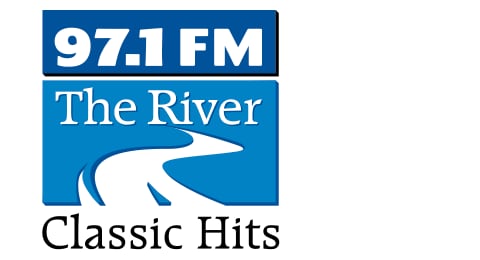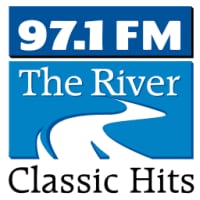Plaintiff's attorneys are targeting next week to file with the court the long-form agreement in the NCAA's landmark settlement of the House, Hubbard and Carter antitrust cases, they tell Yahoo Sports.
However, college athletic leaders from the four power conferences and NCAA are working through finalizing edits to the long-form document, a process that could delay the expected filing date next week and result in an extension from the court.
“We’re waiting for their final comments. We are hoping to file by the end of next week,” Jeffrey Kessler, one of the lead plaintiff’s attorneys in the case, told Yahoo Sports on Tuesday.
Plaintiff’s attorneys sent the long-form document to college leaders earlier this summer in what lawyers describe as a normal process for any settlement. Plaintiff’s attorneys are expected to review any changes from conference and NCAA officials before filing with the court.
The changes are not expected to be significant. Kessler described the long-form agreement as a formalization of the term sheet that the parties agreed to in May, and there are little to no looming issues, he said.
However, there are many looming issues regarding the future revenue-sharing model coming to college athletics, such as roster sizes by sport, a new third-party enforcement arm and the exact revenue cap figure. These items are not necessary to completing the long-form agreement, Kessler said, and are “internal issues” that conference leaders must determine themselves.
For instance, while the agreement prohibits scholarship caps for sports, it permits roster limits but does not specify the limits. The same goes for the enforcement arm and the revenue cap figure: The agreement is for the broader concept and not specifics.
While college leaders spend the next few weeks and months determining these issues, the long-form settlement will be filed soon in the District Court of the Northern District of California, where judge Claudia Wilken will accept the terms or reject them. An acceptance is expected but not guaranteed. Wilken could identify problems and may want to adjust language in the settlement, attorneys say.
If approved by Wilken, athletes who are part of the class receive a notice about the terms with a choice to object to any terms. There is a mandatory 90-day period for objections. An approval hearing, or hearings, would then be scheduled in court over such objections.
The timeline for a full finalization of the settlement is likely to be “early next year,” said Kessler, who suggested the month of January. However, implementation of the new revenue-sharing model would not begin until the start of the 2025-26 academic year. Revenue-sharing checks would most likely be distributed starting in the late summer or early fall, he said.
Aside from the long-form agreement, the issues college leaders are debating are significant to the future revenue-sharing model of college sports: roster limits, enforcement and the revenue cap. Six weeks after the settlement agreement, where do these issues stand?
Roster limits
As part of the settlement, scholarship maximums are ending and roster limits are beginning. However, roster limits must be set at more than the current scholarship maximum in each sport. Schools will be permitted to offer a scholarship to each member of a roster up to the newly created roster limit.
For instance, the football scholarship maximum is currently 85. The roster limit must be set at 85 or greater.
The football roster limit has been the most debated issue among coaches and administrators, and it continues to be an ongoing negotiation among the group. Each power conference presented a recommendation for a football roster limit. The recommendations ranged from 95 to 115, according to those with knowledge of the discussions.
A final decision is expected soon, but a roster figure is not necessary for the long-form agreement, Kessler insisted, though some college leaders hope to include it.
For basketball, roster limits are not expected to drastically change from current scholarship maximums, which are 15 for women’s basketball and 13 for men’s basketball.
The conversation around baseball roster limits is more drastic. The baseball scholarship maximum is 11.7. Discussions for a baseball roster size range from 30-35, multiple sources tell Yahoo Sports.
Each additional roster spot permits a school to offer an additional scholarship. In a competitive recruiting environment, some schools plan to add more than $5 million annually in additional scholarship money. For every men’s scholarship added, a women’s scholarship must be added in an effort to satisfy Title IX.
Enforcement entity
While enforcement remains undecided, the long-form settlement stipulates that any disciplinary action for violating the new revenue-share system will come from a neutral and independent arbiter, not the NCAA, Kessler said.
The settlement does not specify the arbiter, something the two sides must agree on at a later date. The arbiter could be a group of lawyers or a law firm that will hear arguments from a school that is charged with violating provisions of the revenue-sharing model.
Gone are the days of NCAA enforcement committees ruling on potential violations.
“You no longer will have the enforcement committees of school officials levying penalties,” Kessler said.
The settlement, however, does not require the NCAA to dismantle its enforcement team, Kessler said. NCAA enforcement may still exist to enforce other association rules not related to the revenue-sharing model, such as academic violations and so forth.
College leaders contend that the settlement-related injunctive relief grants them the ability to continue their near century-old fight to prevent performance-based pay for athletes through boosters. According to the term sheet, the settlement prohibits recruits or current athletes from entering into any arrangement with a booster unless the deal can be expressly proven as a genuine agreement for use of the player’s likeness. If a booster owns a business, that booster and athletes must show that a deal is related to a “valid business purpose” with compensation that is similar to agreements with other individuals, documents say.
Deals must be “true NIL” and pay what is described as “fair market value,” something officials hope to determine based on disclosure data.
Revenue cap
As for the revenue-sharing cap, the formula to determine the cap — 22% of an average of certain power school revenues — is part of the settlement. But the exact figure will remain uncertain until revenues from the 2024-25 academic year are factored into the average, Kessler said.
Attorneys and commissioners agreed to use as the formula an average of power conference revenue streams that includes TV distribution, ticket sales and sponsorships (not donations). Twenty-two percent of that average will be the revenue-sharing cap figure. Administrators are preparing for the exact figure to be in the low $20 million range in Year 1 of the revenue sharing next fall. However, it will increase as it features escalators.
While the 22% will remain the same through the 10-year agreement, the money figure will change. In Years 2 and 3 of the deal, the money figure will automatically increase by 4% each year.
In Year 4, a re-evaluation of revenues will generate a new cap. Revenues are expected to increase as additional cash flows into departments through new television deals and sponsorship contracts. There are exceptions that can be counted toward the cap, including as much as $2.5 million in Alston-related money already going to athletes and $2.5 million in additional scholarships.
Over the course of the 10-year deal, the plaintiff attorneys expect college athletes at major conference schools to receive close to $20 billion in revenue from their schools. That’s about $28 million annually per power conference school over the duration of the decade.







